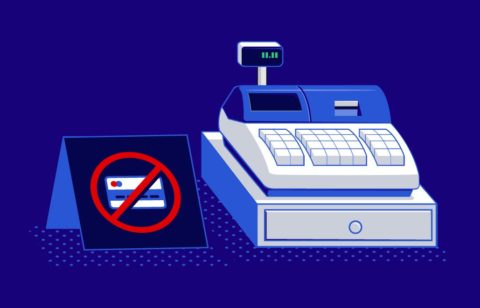Are you one of the 40 million Americans who used your credit or debit card recently at Target? If so,it’s likely that your card information has been stolen. Target has reported that anyone who made purchases by swiping their cards at Target terminals between Nov. 27 and Dec. 15 may have had their accounts exposed to fraud. The stolen information includes customer names, credit and debit card numbers, expiration dates and even the three-digit security number on the backs of cards. The cards that were hacked or had their information stolen included Visa, MasterCard and Target store cards.
What to do if you believe your information was stolen
If you did use your debit or credit card at Target between the dates listed above, you should check your next statements carefully looking for suspicious charges. If you find any, you will need to report them to your credit card company and call Target at 866-852-8680. And if you think your identity was stolen, report this to law enforcement or the Federal Trade Commission.
How did this happen?
Target isn’t admitting how this happened. Companies such as Target spend millions of dollars every year on credit card security. One analyst believes that given the magnitude of the theft that it might have been an inside job and that today’s security standards are not working. Another expert said that something definitely went wrong with Target’s security systems as the fact that 40 million cards were stolen shows a severe security failure that should not have ever happened.
The good news
What happens if you find fraudulent charges on your statement? The good news is that you probably won’t be on the hook for them. First, the credit card companies often are able to flag the charges before they go through and shut down your card. In the event your credit card issuer doesn’t do this, it will usually strip off the charges you claim are fraudulent. This means that the worst thing you may have to deal with is getting a new card.
If you used a debit card
Debit cards offer a lot of the same benefits as credit cards without the worry that you’ll overspend as they are tied to your checking or savings account and you can’t spend more than you have in the account. However, they usually don’t offer the same degree of fraud protection. So, if you used a debit card and your number was stolen, you may have a harder time getting your money back. The reason for this is because debit and credit cards are not treated the same under consumer protection laws. Federal law mandates a $50 limit on your personal liability for fraudulent charges on a credit card. On the other hand, if your debit card is hacked you could be out $500 or more depending on how fast you report the theft. If a thief uses your debit card, your account could be drained and it could take as long as two weeks for your bank to investigate the theft and reimburse you.
Breaking news!
As we were about to post this article, we learned that Chase has put some temporary restrictions on its cards that were affected by the Target security breach. These restrictions will stay until Chase can replace the cards. The restrictions are that cardholders will be limited to a maximum of $100 on cash withdrawals and $300 in purchases per day. However, Chase has also said that less than 10 percent of its customers are affected.
What else you can do
If you did use your credit card at a Target store this holiday shopping season, there are things you could to protect yourself besides checking your statement and notifying Target. If your bank hasn’t replaced your card, you should replace it immediately. This will definitely put an end to any fraudulent charges. When you get your new card be sure to update the information for any accounts where you have it on file for automatic payments or monthly fees. You could also consider signing up for a fraud monitoring service like Lifelock that will monitor the activities on your card and alert you if your account has gotten into the wrong hands. Most credit card companies have similar services that are free but the threat detection services claim they go further, including protecting your credit card information if you lose your wallet or are hacked when shopping online.
Be sneaky
There are a couple of sneaky things you can do to protect yourself from credit card theft. First, when you write you name on the back of a new credit card, use a Sharpie so that a thief couldn’t change your signature. And second, leave that little “Please Activate” strip on your cards. That way, if a thief gets one of your cards and sees that sticker, he may not bother with it because he’ll think it’s never been activated.
 Always be vigilant
Always be vigilant
While banks and credit card companies have their own fraud controls, you need to be ever vigilant as the data breech that occurred at Target won’t be the last. Fraud is a real-time crime so waiting until the end of the month to check your credit and debit card activity doesn’t cut it anymore. You need to check your debit and credit card account activity every few days. If you spot any suspicious activity, be sure to immediately notify your bank or credit card issuer.
Watch out for “hotspots”
Be careful about using a debit card online or at retailers that are more venerable to fraud. ATM machines and gas stations are considered to be are credit and debit card “hot spots” for “skimmers” or machines that capture your card information. When you use an ATM, watch out for any parts that look unusual. The slot where you insert your card should be even with the rest of the machine or have only a very tiny edge. If the slot looks or feels different or if it has an extra bit of plastic sticking out, this could be a skimmer and you should not use the machine. If you don’t notice something looks fishy until after you’ve used your card, be sure to notify your bank immediately so that it can be on the lookout for any fraudulent charges. When you’re using an ATM you also should cover your hand whenever you’re typing in your PIN to prevent a thief from “shoulder surfing” to see and copy it.
Other tips for preventing credit card fraud
There are some other simple ways you can protect yourself from credit card fraud as reported in this video … which also explains why thieves love gift cards.
Be careful with your mail
Another important thing you can do to prevent identity theft is to be careful with your mail. For example, most experts say you should never leave outgoing mail in your mailbox or mail slot. A thief could grab your mail. If it included a payment of some kind he would instantly have your credit card and checking account information. You should take your outgoing mail to the post office instead – especially your credit card payments. For that matter, you should probably go paperless, get your financial information electronically and make your payments online. That way, no thief would ever be able to access your important financial information. If you do get your information on paper, be sure to shred it so that no thief can go dumpster diving and retrieve it.
Lock it all up
Identity thieves don’t need all your information to steal your identity. They need only a bit to get the rest. Be sure to put your passports, Social Security cards, birth certificates and other important documents in a safe deposit box at your bank. If you can’t do this at least put them in a safe you hide in your home. You should also put any credit cards you’ve stopped using into that safe or safe deposit box.
Identity theft is the fastest growing crime in America. In fact, last year about 12.4 million Americans fell victim to this crime. There’s no way you can protect yourself 100% from it but if you follow the advice you’ve just read in this article, you can minimize the odds that you’ll be victimized.





